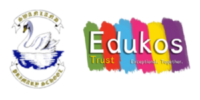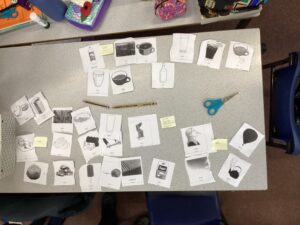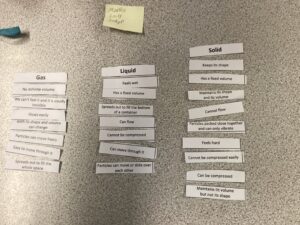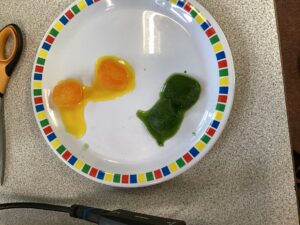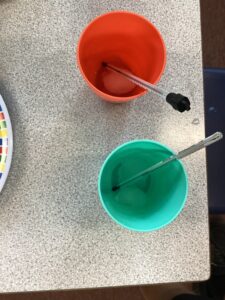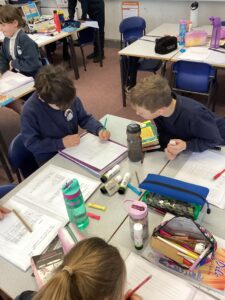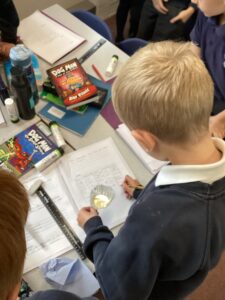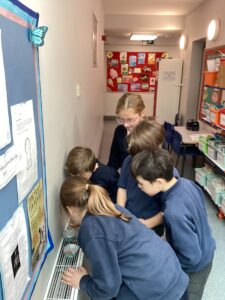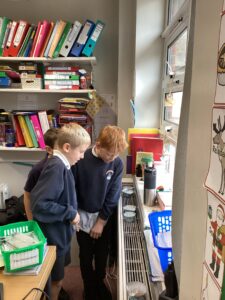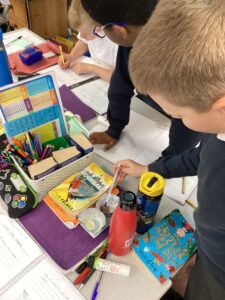Science Curriculum
At Swanland School science is taught through a variety of lines of enquiry, investigations, questioning and research. It follows a hands-on approach, as much as is possible. It is hoped that it will inspire children to be the Scientists of the future!
We aim to ensure that all pupils:
- develop scientific knowledge through the areas of biology, chemistry and physics and to then be able to apply these ideas in a transferrable way, that helps our children use what they learn and apply it across many other areas of the curriculum.
- develop an understanding of the nature, processes and methods of science through different types of science enquiries that help them to answer scientific questions about the world around them
- are equipped with the scientific knowledge required to understand the uses and implications of science, today and for the future
Science at Swanland Primary School is very much, a hands-on approach. Children are encouraged to be inquisitive, ask questions, be creative, develop independent thinking and discuss their learning. Our lessons are designed to engage, inspire, promote independence and build upon previous skills and knowledge. Carefully planned lessons will ensure that ‘Working Scientifically’, which involves the understanding of the sorts of questions that are key to science, the design of experiments, reasoning and arguing with scientific evidence and also analysing and interpreting data, is intertwined throughout, being taught through, and being clearly related to the appropriate science objectives. Ultimately we aspire to ensure that our children become confident and successful learners, enjoying the process of exploring values and ideas through science.
To ensure that a high-quality curriculum is being taught, the Science subject leader will look at children’s books, speak to children, and carry out learning walks, during lessons.
A progression of what is taught in Science is identified in our curriculum plans and progressions.
KS1
Our curriculum focus is to enable children to experience, observe and explain what is occurring, to predict how things will behave and analyse the results. Planned lessons will develop a sense of excitement and curiosity about natural phenomena, through the use of first-hand practical experiences and also the use of appropriate secondary sources, such as books, photos and videos.
Throughout their work they will be encouraged to work scientifically throughout. This will include observations, pattern-seeking, identifying, classifying and grouping, comparative and fair testing and using research.
Children will be encouraged to read and spell scientific vocabulary, appropriate to the task and their increasing word reading and spelling knowledge.
Lower KS2, Years 3 and 4
Our curriculum focus in Years 3 and 4 is to further build upon on the children’s experiences in KS1. The children will be encouraged to broaden their scientific views of the world around them.
Carefully planned lessons will encourage the children to gradually become more independent in their use of scientific enquiry, such as asking their own questions and deciding the best way to answer them through the most appropriate method of scientific enquiry. The children will be encouraged to independently arrive at simple conclusions and use some scientific language, first to talk about and, later, to write about what they have found out. Discussion will be promoted to generate further questions, following their investigations and conclusions.
Children will be encouraged to build upon previous scientific vocabulary from KS1. They will be asked to read and spell scientific vocabulary, correctly and with confidence, using their growing word reading and spelling knowledge.
Upper KS2, Years 5 and 6
Our curriculum focus in Years 5 and 6 is to continue to further develop and build upon previous skills and knowledge, that has been taught earlier in the children’s education. The children will be encouraged to make links with their previous learning and lessons are planned to further develop a deeper understanding, of a wide range of scientific ideas and concepts.
Children will be encouraged to become much more independent with their discussions, explorations, questioning and analysis. Lessons will be planned that allow children to encounter more abstract ideas, and begin to recognise how these ideas help them to understand and predict how the world operates. These lessons will also enable the children to recognise that scientific ideas change and develop over time.
Carefully planned lessons will also encourage the children to be independent in their selection of the most appropriate method of scientific enquiry, to answer science questions. The pupil-led investigations will enable them to arrive at conclusions, based on their data and observations, using evidence to justify their ideas and their scientific knowledge and understanding to explain their findings.
Pupils should read, spell and pronounce scientific vocabulary correctly, within context.
Impact
We believe that our Science curriculum is progressive and challenging, whilst remaining relevant. It is carefully planned to demonstrate progression. We measure the impact of our curriculum in several ways, which includes: learning walks and pupil voice, lesson observations, and skills list to aid teacher assessment.
Through our science curriculum we envisage that:
- Children will become resilient, independent and curious scientists who ask questions and find things out for themselves.
- Science will be a high profile subject throughout the school.
- Children will be enthusiastic and motivated scientific learners.
- Parents and the wider community will support science learning through trips and visitors.
- Children will have an awareness of the full range of scientific careers and pathways available to them and will be keen to pursue STEM subjects at secondary school.
- Children will leave for secondary school equipped with the scientific knowledge and skills needed to succeed in their further education.
During each year group the teacher will be able to use their knowledge and understanding of each pupil, gained through extensive formative assessment over the previous Science learning, to reach an accurate judgment of what they know and can do. This is recorded when the teacher has reached the end of a particular ‘takeaway’ or in the case of the EYFS added to the pupils’ online learning journal via Tapestry. Most critically this decision is based on the professional knowledge and judgement that the teacher possesses of the pupil, which is then used to make a rounded and holistic judgement of their attainment in Science. Tapestry is used in the EYFS and Seesaw in KS1 and KS2 to upload children’s work, involving parents in their child’s learning journey.
KS1
- asking simple questions and recognising that they can be answered in different ways
- observing closely, using simple equipment
- performing simple tests
- identifying and classifying
- using their observations and ideas to suggest answers to questions
- gathering and recording data to help in answering questions.
Pupils in years 1 and 2 should explore the world around them and raise their own questions. They should experience different types of scientific enquiries, including practical activities, and begin to recognise ways in which they might answer scientific questions. They should use simple features to compare objects, materials and living things and, with help, decide how to sort and group them, observe changes over time, and, with help, they should begin to notice patterns and relationships. They should ask people questions and use simple secondary sources to find answers. They should use simple measurements and equipment (for example, hand lenses, egg timers) to gather information, carry out simple tests, record simple information, and talk about what they have found out and how they found it out. With help, they should record and communicate their findings in a range of ways and begin to use simple scientific language.
Lower KS2, Years 3 and 4
- asking relevant questions and using different types of scientific enquiries to answer them
- setting up simple practical enquiries, comparative and fair tests
- making systematic and careful observations and, where appropriate, taking accurate measurements using standard units, using a range of equipment, including thermometers and data loggers
- gathering, recording, classifying and presenting data in a variety of ways to help in answering questions
- recording findings using simple scientific language, drawings, labelled diagrams, keys, bar charts, and tables
- reporting on findings from enquiries, including oral and written explanations, displays or presentations of results and conclusions
- using results to draw simple conclusions, make predictions for new values, suggest improvements and raise further questions
- identifying differences, similarities or changes related to simple scientific ideas and processes
- using straightforward scientific evidence to answer questions or to support their findings.
Pupils in years 3 and 4 should be given a range of scientific experiences to enable them to ask their own questions about the world around them. They should start to make their own choices about which type of scientific enquiry they might use to answer questions; recognise when a simple fair test is necessary and help to decide how to set it up; talk about criteria for grouping, sorting and classifying; and use simple keys. They should begin to look for naturally occurring patterns and links and decide what data to collect to identify them. They should help to make decisions about what observations to make, how long to make them for and the type of simple equipment that might be used.
They should learn how to use new equipment, such as data loggers, appropriately. They should collect data from their own observations and measurements, using notes, simple tables and standard units, and help to make decisions about how to record and analyse this data. With help, pupils should look for changes, patterns, similarities and differences in their data in order to draw simple conclusions and answer questions. With support, they should identify new questions arising from the data, making predictions for new values within or beyond the data they have collected and finding ways of improving what they have already done. They should also recognise when and how secondary sources, such as internet searches, might help them to answer questions that cannot be answered through practical investigations. Pupils should use relevant scientific language to discuss their ideas and communicate their findings in ways that are appropriate for different audiences.
Upper KS2, Years 5 and 6
- planning different types of scientific enquiries to answer questions, including recognising and controlling variables where necessary
- taking measurements, using a range of scientific equipment, with increasing accuracy and precision, taking repeat readings when needed
- recording data and results of increasing complexity using scientific diagrams and labels, classification keys, tables, scatter graphs, bar and line graphs
- using test results to make predictions to set up further comparative and fair tests
- reporting and presenting findings from enquiries, including conclusions, whether one event triggered the occurrence of another event, and explaining their results and how reliable they are, in verbal and written forms such as displays and other presentations
- identifying scientific evidence that has been used to support or refute ideas or arguments.
Pupils in years 5 and 6 should use their science experiences to: explore ideas and raise different kinds of questions; select and plan the most appropriate type of scientific enquiry to use to answer scientific questions; recognise when and how to set up comparative and fair tests and explain which variables need to be controlled and why. They should use and develop keys and other information records to identify, classify and describe living things and materials, and identify patterns that might be found in the natural environment. They should make their own decisions about what observations to make, what measurements to use and how long to make them for, and whether to repeat them; choose the most appropriate equipment to make measurements and explain how to use it accurately. They should decide how to record data from a choice of familiar approaches; look at how one event in their investigation can trigger the occurrence of another event, in their data, and identify evidence that disproves or supports their ideas. They should use their results to identify when further tests and observations might be needed; recognise which secondary sources will be most useful to research their ideas and begin to separate opinion from fact. They should use relevant scientific language and illustrations to discuss, communicate and justify their scientific ideas and should talk about how scientific ideas have developed over time.
